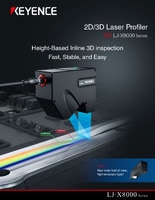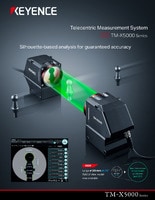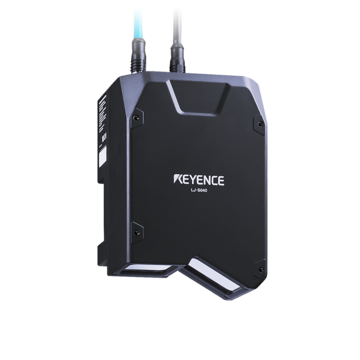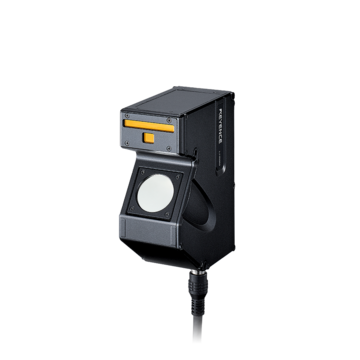Measurement Sensors
Dimension Measurement
Displacement Measurement
How to Improve Quality Inspection with Real-Time Data Processing

Real-time data processing has reshaped quality inspection as it enables manufacturers to use continuous monitoring and instant analysis of production data. Traditional inspection methods often rely on manual oversight and periodic testing, which leads to inefficiencies and delayed defect detection. With manufacturing becoming more complex, factories have to adopt faster and more reliable solutions to maintain high-quality standards. By using real-time data, manufacturers can detect errors when they happen and reduce human error from manual inspections. With advancements in automated data processing and AI-driven analytics, businesses can achieve greater accuracy and minimize waste.
With detailed and time-stamped inspection data automatically recorded, businesses gain a clearer view of production trends and can trace defects back to specific batches. This level of transparency helps improve processes and comply with regulations. With quality demands growing across industries, manufacturers need a way to maintain consistent workflows and meet customer expectations without compromise.
The Importance of Real-Time Data Processing in Quality Inspection
Unlike conventional batch-based data processing, which evaluates inspection results at scheduled intervals, real-time data processing technologies operate on a continual basis; this helps engineers analyze measurements as they’re captured. This eliminates the lag between defect identification and corrective action, reducing production waste and improving yield rates. With real-time data processing systems, quality control teams can receive instant alerts when deviations occur, which gives them a headstart on intervening before defects escalate or clear production lines.
Further advancements have transformed inspection processes through AI-powered analytics, cloud computing, and high-speed imaging systems. Now manufacturers can assess surface defects and dimensional tolerances to maintain structural integrity with absolute accuracy. With defect detection under control, quality teams can remain proactive rather than reactive. By implementing real-time data processing, businesses improve efficiency while reducing costs associated with defects and recalls. This means engineers can make immediate and data-backed decisions to help processes remain consistent across all production batches.
In addition to improving defect detection, real time data processing helps create predictive maintenance schedules; these systems analyze the constant output of data to identify irregularities that signal potential breakdowns. As manufacturers are given the freedom to schedule maintenance proactively, machine breakdowns can be prevented and downtime reduced.
We’re here to provide you with more details.
Reach out today!

How Automated Data Processing Enhances Accuracy
Through real time data processing technologies, inspection systems can constantly validate product measurements against predefined thresholds. Manual inspection methods introduce inconsistencies as human perception varies based on fatigue and experience. Therefore, these systems minimize the risk of overlooked defects and prevent the production of non-conforming products while eliminating the variables that cause issues throughout production.
High-speed optical sensors and AI-driven analysis further improve accuracy in real time data processing and help the system learn and adapt. These systems can analyze the historical defect trends on a production line to prevent the same issues down the line. This self-improving capability reduces false positives while ensuring that actual defects are seen by sensors and are flagged with a high degree of confidence.
For precise quality measurements, manufacturers rely on measurement accuracy to make sure that their inspection methods align with the highest industry standards. By using real-time validation, engineers can instantly compare live measurements to baseline specifications, improving overall efficiency in production environments.
Automated data processing also helps maintain consistency across multiple production facilities. As they standardize quality control processes, manufacturers can maintain uniform product specifications regardless of location which is particularly beneficial for global supply chains where maintaining consistent quality across different manufacturing sites is essential.
Reducing Human Error with Automated Quality Control
Human error is one of the leading causes of defects in quality inspection. Even with highly trained professionals, humans are susceptible to oversight, inconsistency, and transcription mistakes. Automated data processing addresses these challenges by standardizing how inspection data is captured and recorded.
In real-time data processing systems, sensors continuously monitor production variables to identify deviations as they occur. Automated alerts make sure that quality teams are notified immediately when data falls outside acceptable limits. With the reduced reliance on human intervention, these systems prevent errors from compounding and mitigate the risks associated with delayed defect detection.
Manual data entry often introduces inconsistencies that can distort inspection results and impact data integrity. With automated data processing, measurements are recorded directly from inspection equipment to databases which almost eliminates the possibility of transcription errors. This keeps quality records accurate and fully traceable.
Advanced AI models further promote quality control by learning from past inspection data by not only improving accuracy but also increasing overall operational efficiency. Over time, these systems can refine their ability to detect patterns that indicate possible defects, in turn allowing engineers to make adjustments or proactively address errors on the production line. Employees can focus on higher-priority quality assurance tasks rather than manually verifying each measurement.
Beyond just preventing errors, these systems contribute strongly to worker safety. Manual quality control processes often require employees to inspect high-speed production lines or hazardous materials, which increases the risk of injury. By automating inspections, manufacturers can reduce worker exposure to this while making sure their inspections are thorough and accurate.
We’re here to provide you with more details.
Reach out today!

Improving Defect Detection with Real-Time Insights
Real-time data processing provides immediate insights into production quality. Manufacturers have the ability to pinpoint defects before they result in costly rework or product recalls. AI-driven quality inspection systems combine real-time data processing technologies to analyze sensor data and high-speed imagery instantly. These systems can evaluate thousands of data points per second and identify deviations that would be difficult for human inspectors to identify.
Cloud-based analytic platforms extend the benefits of real-time data processing as they provide centralized oversight in quality control. Quality managers can access live inspection data from multiple production lines, giving them visible insights on recurring trends and sears that require process refinement.
Another key advancement in defect detection is the use of laser measurement systems to capture detailed surfaces and dimensional data in real time. High-speed 1D laser and 2D laser technologies allow for precise, non-contact inspections that can detect even the most microscopic imperfections. These systems also improve inspection accuracy while reducing the need for physical handling, which can introduce additional variables that affect the quality control process, like oils, dust, or other debris. With the integration of automated data processing with quality inspections, manufacturers move beyond simple pass-or-fail assessments.
Conclusion
From high-speed laser measurement systems to real-time data acquisition systems, KEYENCE can provide the solutions that manufacturers need in order to catch defects early and reduce errors in their production lines.
For over 30 years, we have been helping businesses improve their quality inspections. Whether you need to measure the surface of automotive parts or perform quality inspections on medical devices, KEYENCE is the industry leader you need on your side to keep your operation running.
Whether you're interested in reducing errors or improving inspection speeds, our sensors and automated tools have been designed to help keep your production running smoothly by optimizing your quality inspection process with real-time data—start today!
Contact us to learn more about how our advanced technology can help take your business to the next level.
Contact Us
Related Products
Applications
Dimension Measurement
- Thickness and Width Measurement
- Step Height Measurement
- Inner and Outer Diameter Measurement
- Measuring Angles
- Meandering/Edge Measurement
Displacement Measurement
- Positioning and Stroke Length Measurement
- Vibration and Runout Measurement
- Deflection Measurement
- Measuring Eccentricity







